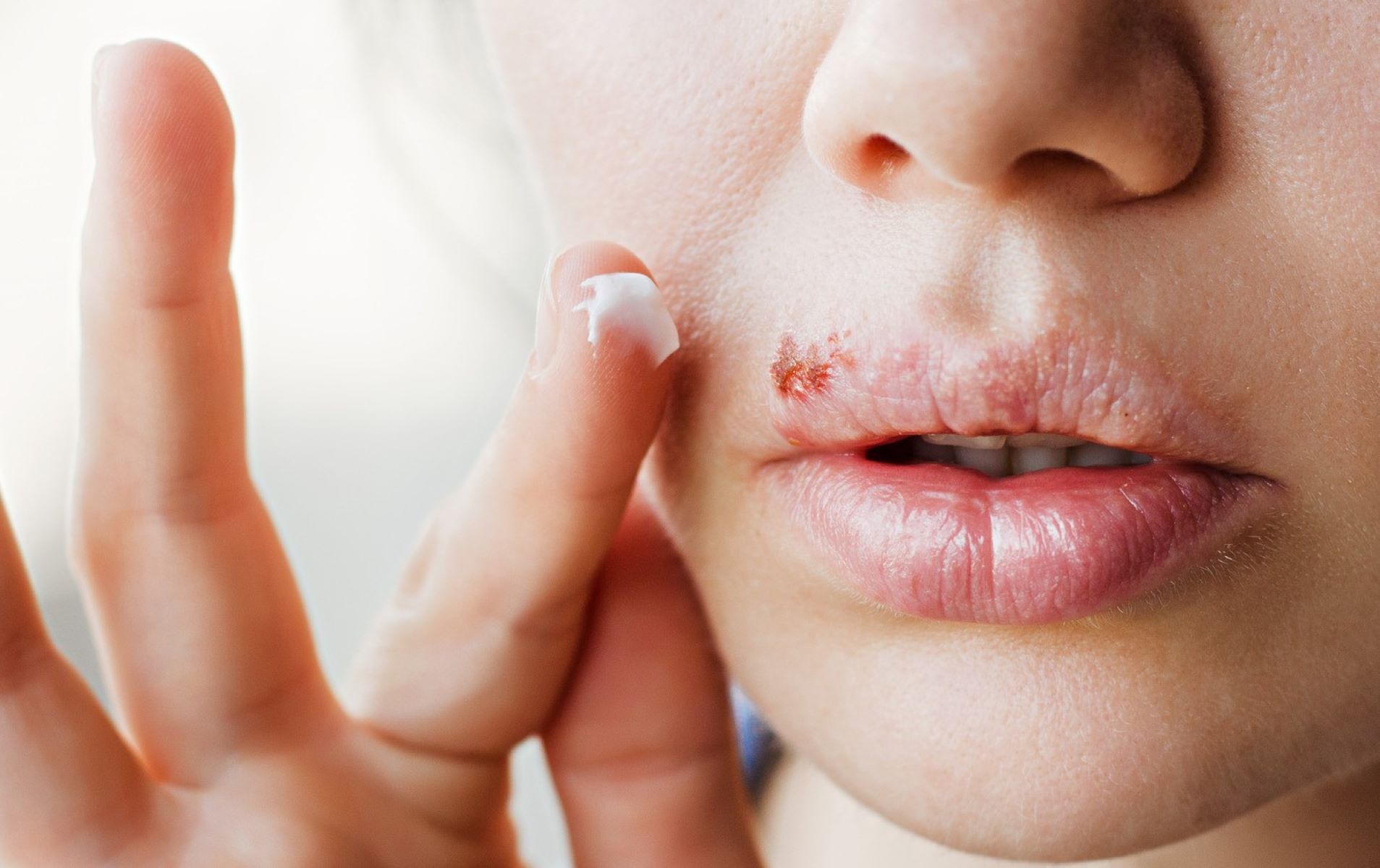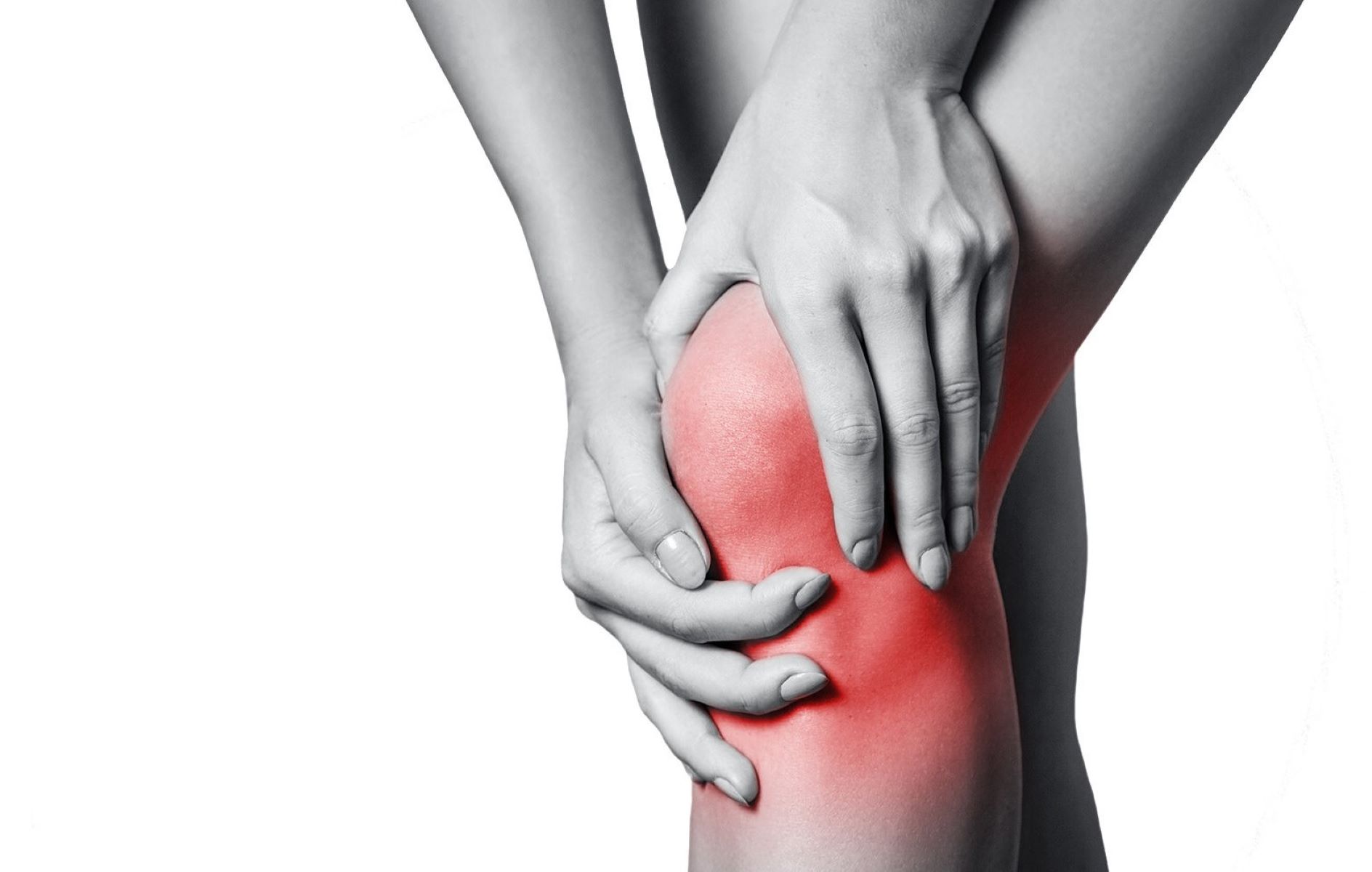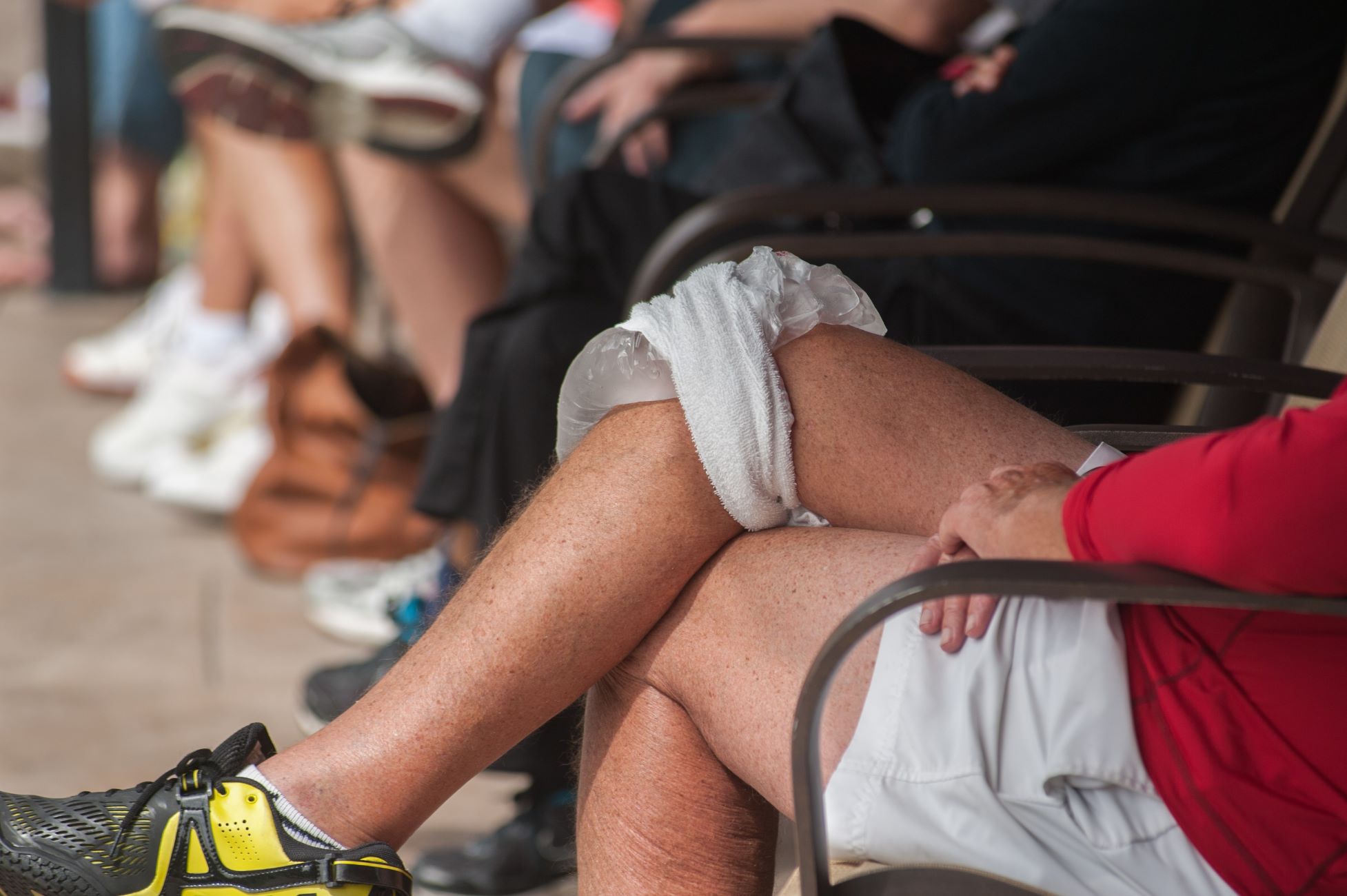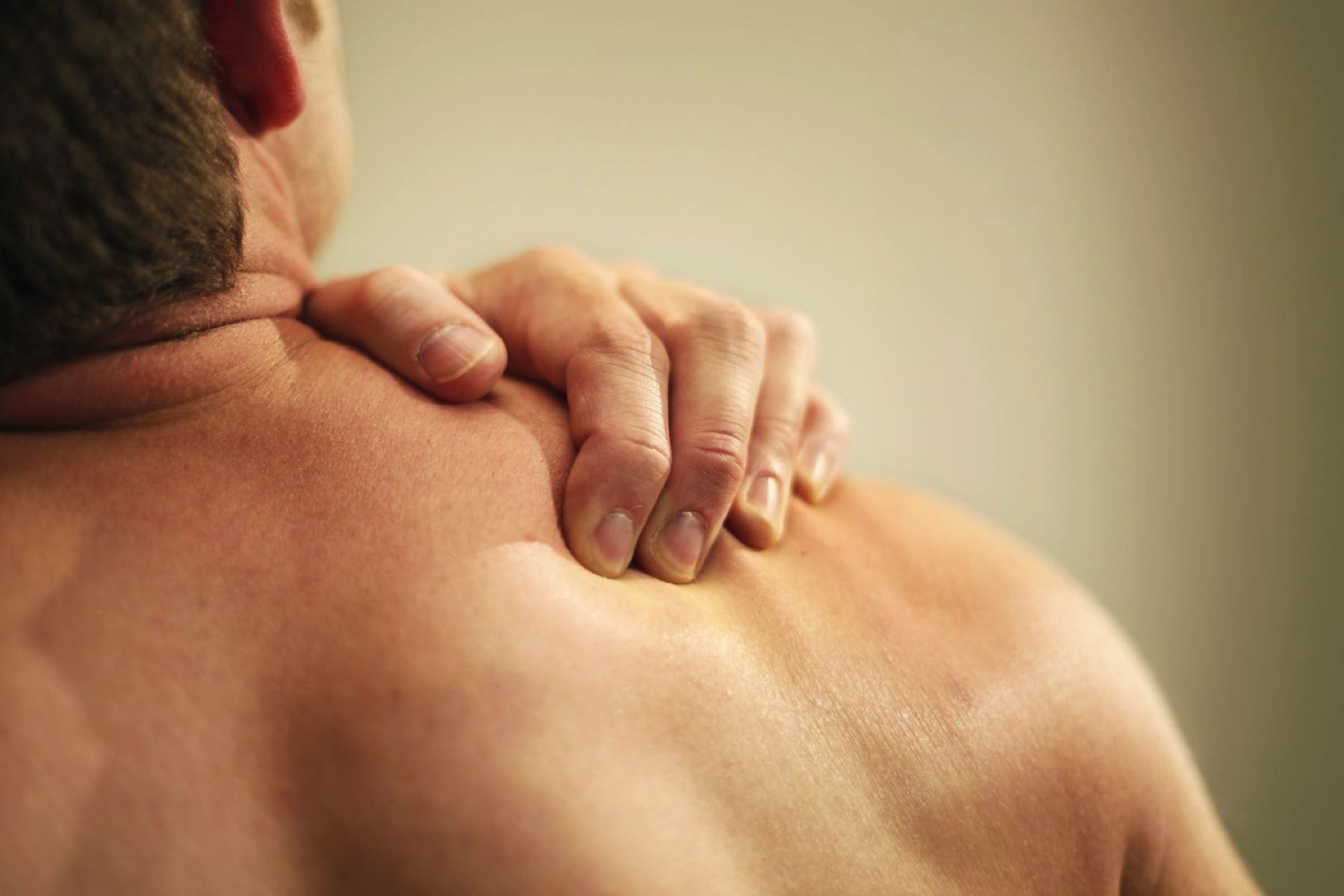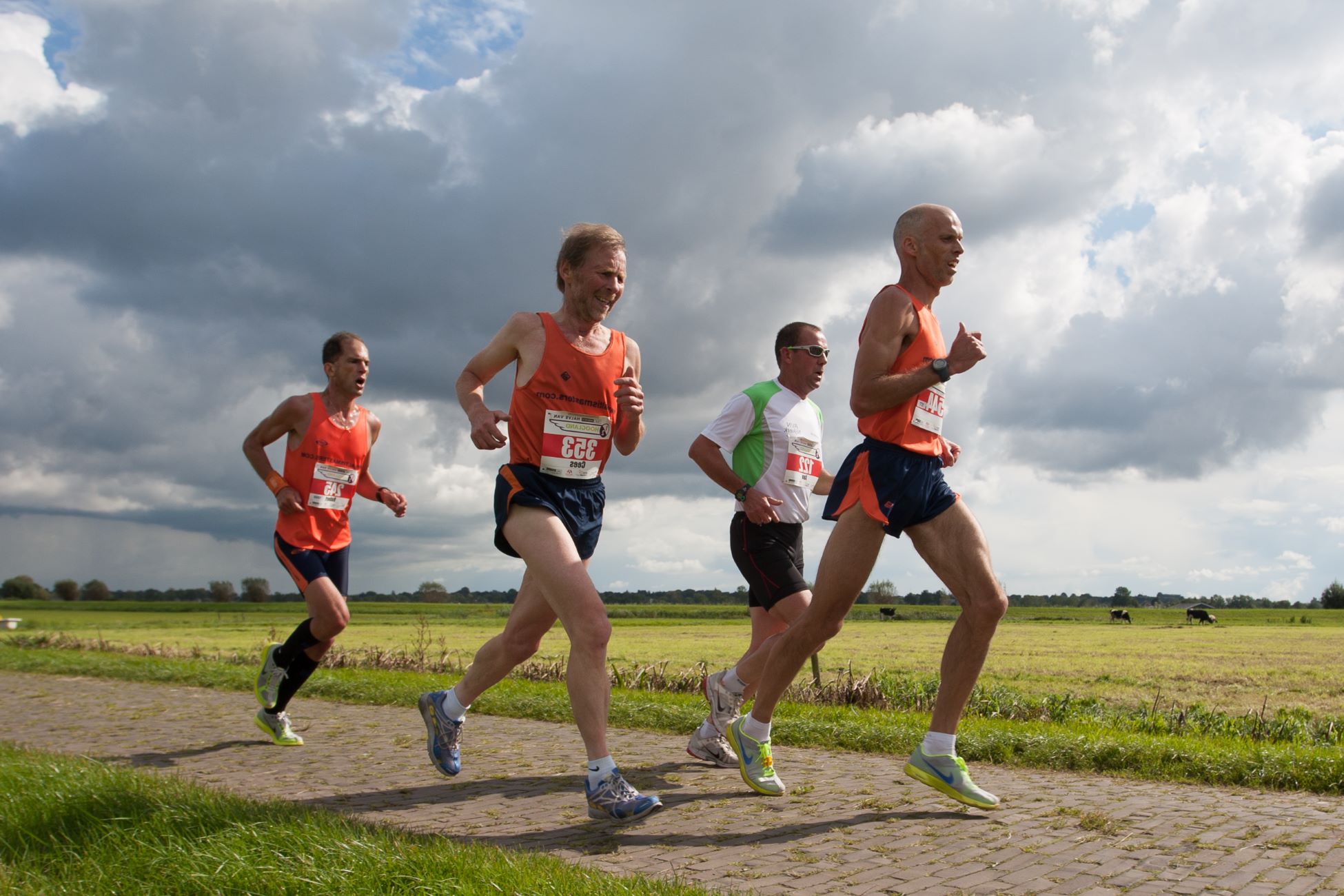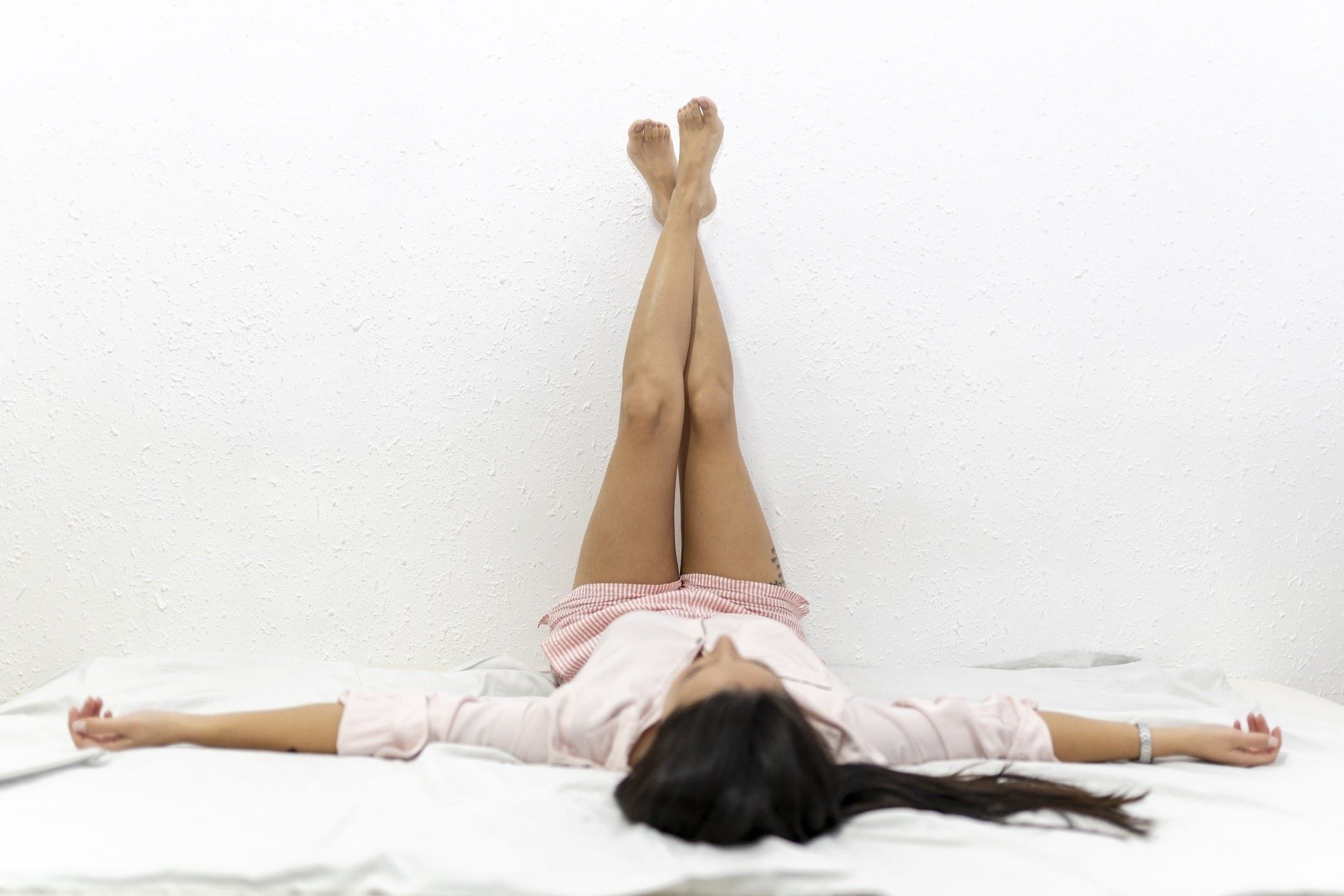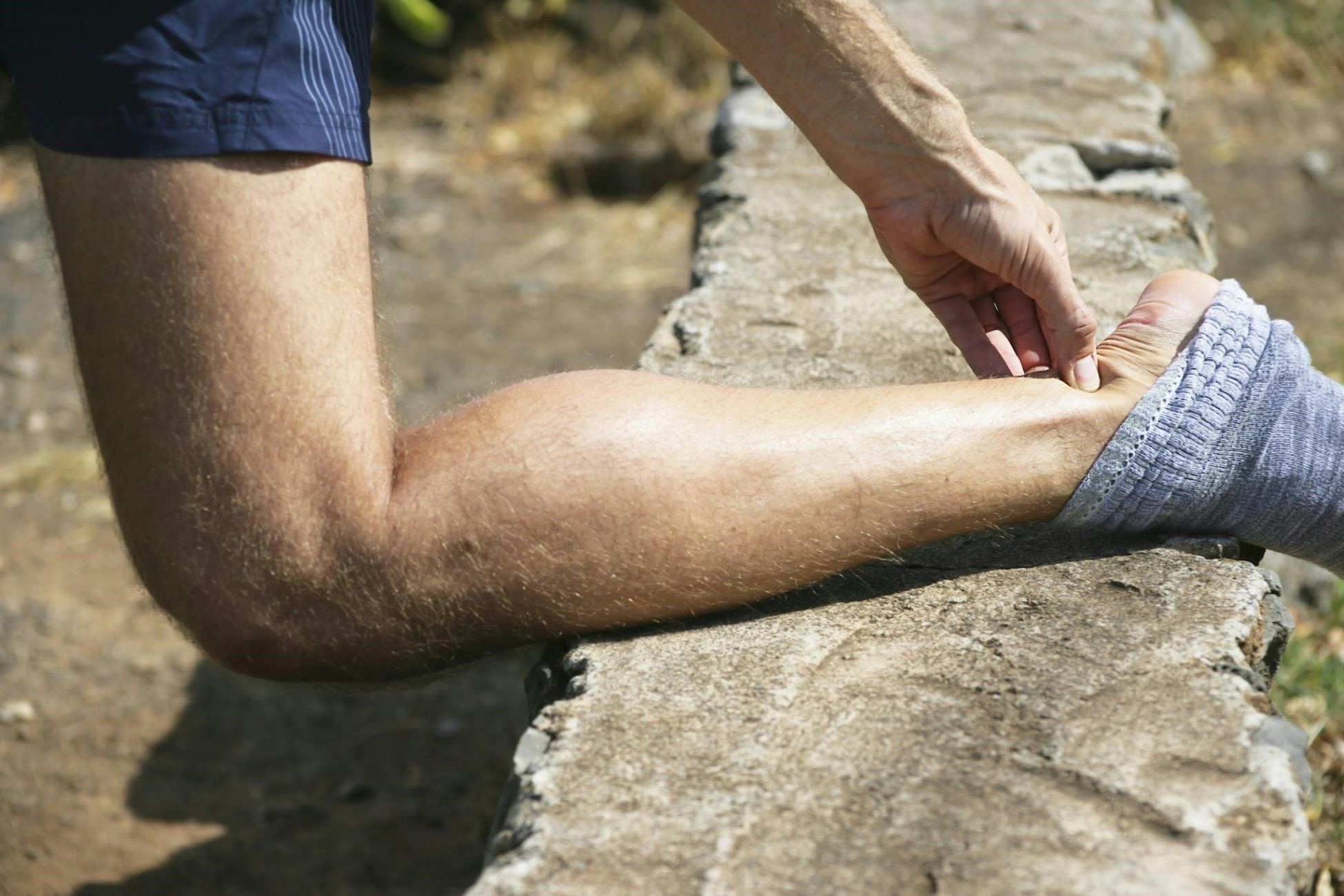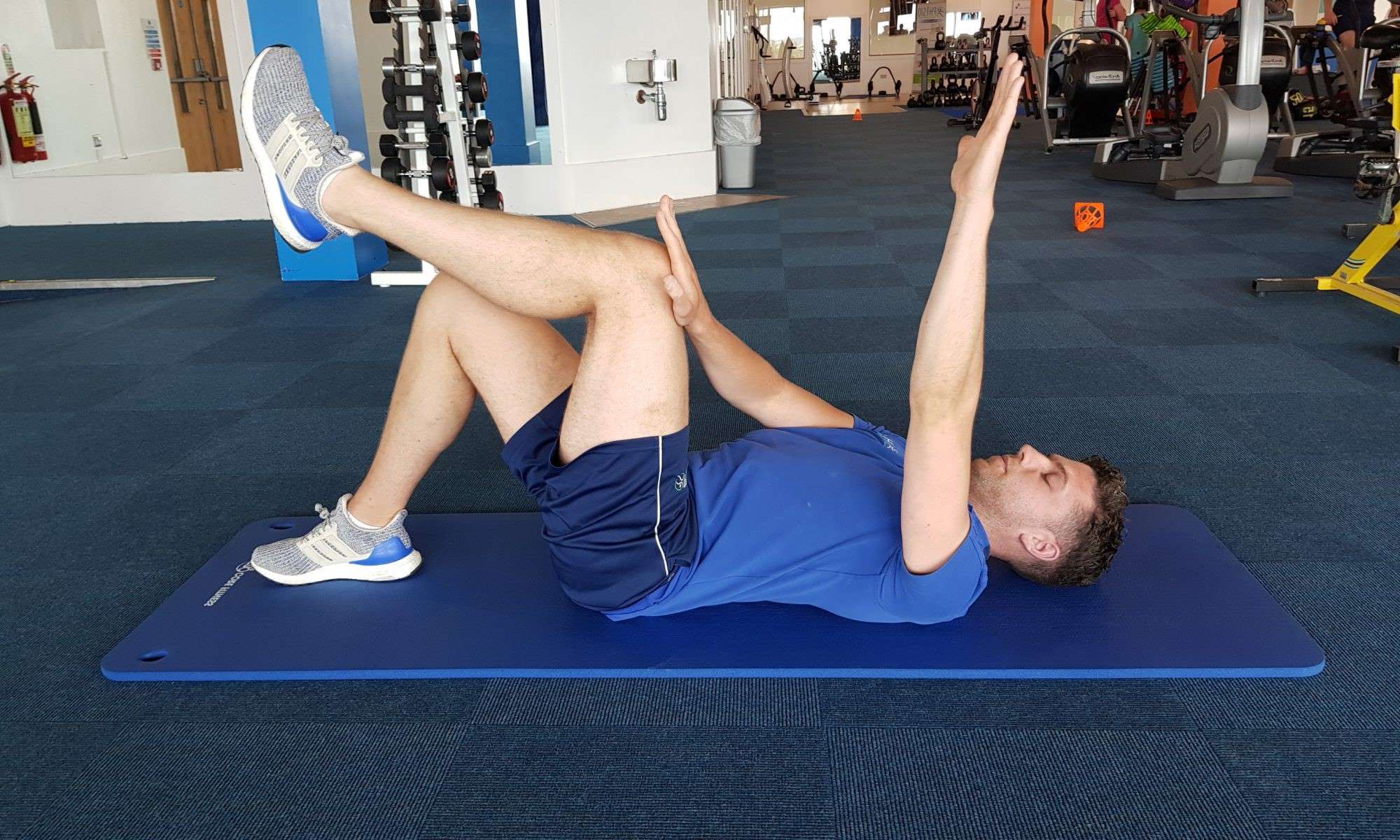Home>Health & Nutrition>Recovery>Are Sore Quads After A Race Normal Or Cause For Concern?
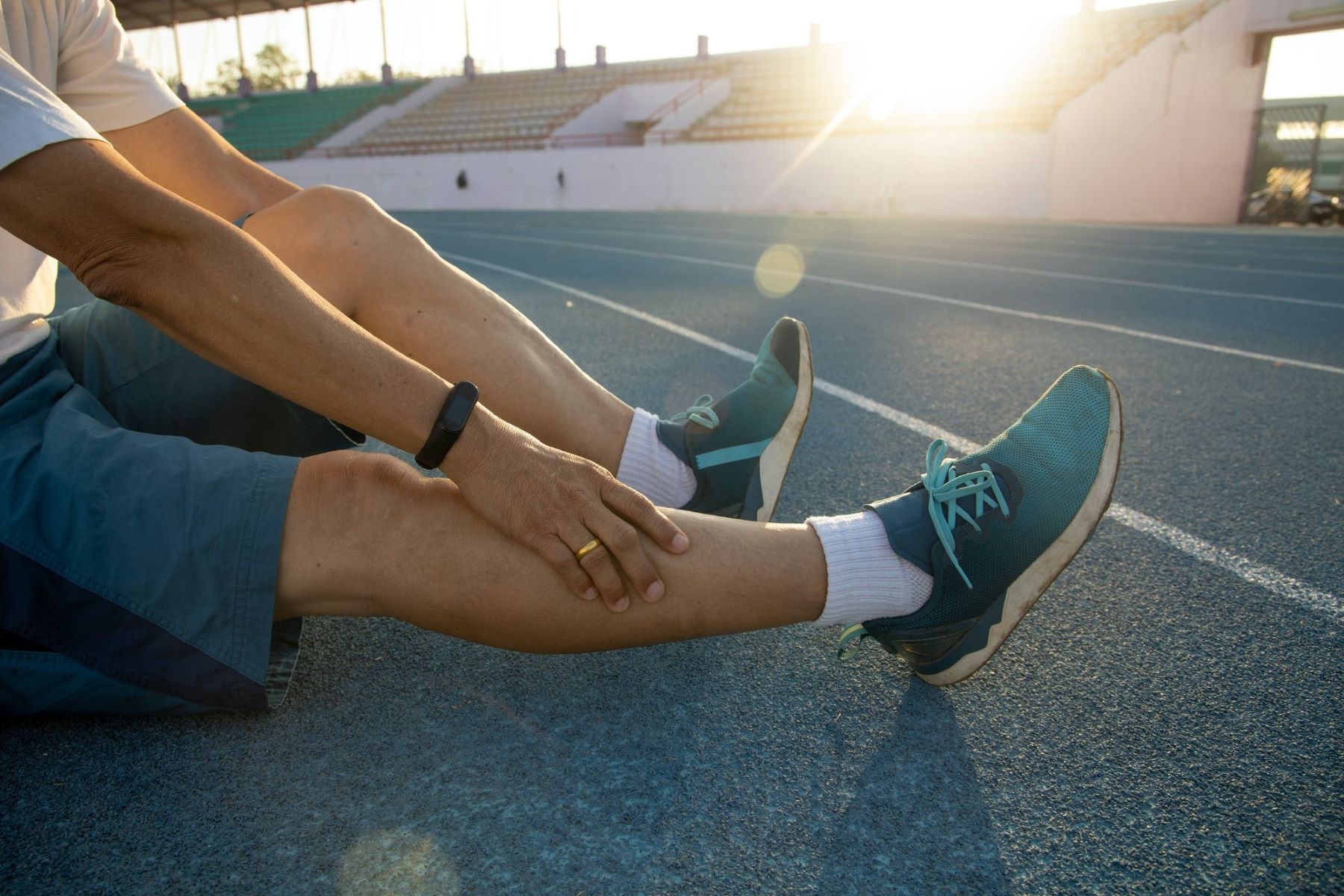

Recovery
Are Sore Quads After A Race Normal Or Cause For Concern?
Published: February 26, 2024
Learn about the normal recovery process for sore quads after a race and when to seek medical attention. Understand the causes and treatments for post-race quad soreness.
(Many of the links in this article redirect to a specific reviewed product. Your purchase of these products through affiliate links helps to generate commission for Therunningadvisor.com, at no extra cost. Learn more)
Table of Contents
Understanding Quadriceps Muscle Soreness
Quadriceps muscle soreness, commonly referred to as "sore quads," is a prevalent condition experienced by athletes, particularly after engaging in strenuous physical activities such as running a race. The quadriceps, a group of four muscles located at the front of the thigh, play a pivotal role in activities that involve knee extension and leg movement. When these muscles are subjected to intense or prolonged exertion, they can become sore and tender, leading to discomfort and reduced mobility.
The sensation of soreness in the quadriceps is often attributed to microscopic damage to the muscle fibers, which occurs during rigorous physical exercise. This damage triggers an inflammatory response in the body as it works to repair and rebuild the affected muscle tissue. Consequently, individuals may experience stiffness, tenderness, and aching in their quadriceps following a race or intense workout.
It's important to note that quadriceps muscle soreness is a natural physiological response to physical exertion and is typically indicative of the muscles adapting and becoming stronger. This process, known as muscle hypertrophy, involves the repair and growth of muscle fibers, ultimately enhancing their capacity to withstand future physical demands.
Understanding the nature of quadriceps muscle soreness can provide athletes with valuable insights into the body's adaptive mechanisms and the significance of allowing adequate recovery time. By recognizing that soreness is a normal part of the muscle strengthening process, individuals can approach post-race recovery with a balanced perspective, acknowledging the temporary discomfort as a sign of progress rather than a cause for alarm.
In summary, quadriceps muscle soreness is a common occurrence following a race or intense physical activity, stemming from microscopic muscle fiber damage and the subsequent inflammatory response. Embracing this understanding can empower athletes to navigate their post-race recovery journey with patience and informed awareness of the body's remarkable capacity for adaptation and growth.
Factors Contributing to Sore Quads After a Race
-
Muscle Fatigue: During a race, the quadriceps muscles are subjected to repetitive contractions and extensions, leading to muscle fatigue. This prolonged exertion can result in microtears within the muscle fibers, contributing to post-race soreness.
-
Intensity and Duration of the Race: The intensity and duration of the race play a significant role in the development of sore quads. Longer races or those with challenging terrains can place greater stress on the quadriceps, leading to heightened soreness post-event.
-
Inadequate Warm-Up: Insufficient warm-up before the race can leave the quadriceps muscles vulnerable to strain and fatigue. A thorough warm-up routine helps prepare the muscles for the impending physical demands, reducing the likelihood of excessive soreness afterward.
-
Running Technique: Poor running form or biomechanical imbalances can place undue strain on the quadriceps, leading to increased soreness post-race. Proper running technique, including efficient stride mechanics and foot placement, can help alleviate excessive stress on the quadriceps.
-
Hydration and Nutrition: Dehydration and inadequate nutrition can impact muscle function and recovery. Insufficient hydration and nutrient depletion during a race can exacerbate post-race soreness in the quadriceps, emphasizing the importance of proper hydration and nutrition during endurance events.
-
Insufficient Recovery Periods: Inadequate rest and recovery periods between training sessions and races can contribute to persistent soreness in the quadriceps. Without ample time for muscle repair and regeneration, the likelihood of experiencing prolonged soreness increases.
-
Terrain and Surface Conditions: The nature of the race terrain and surface conditions can influence the degree of quadriceps soreness. Uneven or hilly terrains, as well as hard surfaces, can intensify the impact on the quadriceps, potentially leading to heightened post-race soreness.
Understanding these contributing factors can empower athletes to make informed decisions regarding their training, race preparation, and post-event recovery strategies. By addressing these factors proactively, individuals can mitigate the risk of excessive quadriceps soreness and optimize their overall race experience.
Differentiating Between Normal Soreness and Potential Injury
Distinguishing between normal quadriceps muscle soreness and potential injury is crucial for athletes to make informed decisions about their post-race recovery and seek appropriate medical attention when necessary. Understanding the subtle nuances that differentiate between these two conditions can prevent exacerbation of injuries and promote effective rehabilitation. Here are key indicators to differentiate between normal soreness and potential injury:
Normal Soreness:
Normal soreness in the quadriceps typically manifests as a dull, achy sensation within the muscle group. It is often symmetrical, affecting both legs to a similar degree. This type of soreness is commonly experienced after engaging in intense physical activities, such as running a race, and is accompanied by a feeling of fatigue and stiffness in the quadriceps. The onset of normal soreness is usually within 24 to 48 hours post-race and gradually diminishes as the muscles recover. Athletes may also notice increased sensitivity to touch and mild swelling in the affected area, indicative of the body's natural inflammatory response to muscle exertion.
Potential Injury:
In contrast, potential injuries to the quadriceps may present with distinct characteristics that warrant heightened attention. Acute, sharp pain localized in a specific area of the quadriceps, especially during movement or weight-bearing activities, can signify a potential injury. Athletes may experience difficulty bearing weight on the affected leg or notice a significant reduction in mobility due to pain. Additionally, swelling, bruising, or visible deformities in the quadriceps region may indicate a more severe injury, such as a muscle strain, tear, or rupture. It is essential to pay attention to the persistence and intensity of pain, as well as any accompanying symptoms such as weakness, instability, or a popping sensation during the race or immediately afterward.
Differentiating Factors:
Differentiating between normal soreness and potential injury also involves considering the circumstances surrounding the onset of symptoms. If the soreness gradually improves with rest, gentle stretching, and self-care measures, it is likely indicative of normal post-race muscle fatigue. Conversely, if the symptoms persist or worsen despite conservative management, it may signal an underlying injury that requires professional evaluation. Athletes should also assess whether the soreness aligns with their typical post-race recovery experiences or if it deviates significantly in terms of intensity, duration, or associated symptoms.
By recognizing these differentiating factors, athletes can make informed judgments about the nature of their quadriceps discomfort and take appropriate steps to address their post-race recovery needs. Seeking medical evaluation for persistent or concerning symptoms is crucial to accurately diagnose and treat potential injuries, safeguarding the long-term well-being and performance of athletes.
Tips for Managing Sore Quads Post-Race
After completing a race, effective management of sore quads is essential to support the body's recovery process and minimize discomfort. Implementing strategic post-race care can expedite muscle recovery and enhance overall well-being. Here are valuable tips for managing sore quads post-race:
-
Gentle Stretching: Engage in gentle, static stretching exercises targeting the quadriceps to alleviate tightness and promote blood flow to the muscles. Incorporating stretches such as the standing quad stretch and kneeling hip flexor stretch can help relieve post-race soreness.
-
Foam Rolling: Utilize a foam roller to perform self-myofascial release on the quadriceps. Rolling the foam roller along the length of the quadriceps muscles can help reduce muscle tension and enhance flexibility, contributing to post-race recovery.
-
Active Recovery: Engage in low-impact, non-strenuous activities such as walking or cycling to facilitate active recovery. Light exercise promotes circulation and aids in flushing out metabolic byproducts, potentially reducing soreness in the quadriceps.
-
Hydration and Nutrition: Prioritize hydration and consume nutrient-dense foods to support muscle repair and replenish energy stores. Adequate hydration and balanced nutrition play a pivotal role in optimizing post-race recovery and minimizing muscle soreness.
-
Rest and Recovery: Allow the body ample time to rest and recuperate following the race. Incorporating sufficient rest into the post-race recovery period is crucial for the quadriceps muscles to undergo repair and adaptation, ultimately reducing soreness.
-
Cross-Training: Incorporate cross-training activities such as swimming or yoga to diversify physical exertion and alleviate strain on the quadriceps. Cross-training promotes overall muscle balance and can aid in mitigating post-race soreness.
-
Gradual Return to Training: Gradually reintroduce training activities, avoiding sudden or intense workouts that may exacerbate quadriceps soreness. A gradual return to training allows the muscles to adapt and recover effectively.
-
Ice Therapy: Apply ice packs or cold compresses to the sore quadriceps to reduce inflammation and alleviate discomfort. Cold therapy can help manage post-race soreness and promote muscle recovery.
By implementing these tips for managing sore quads post-race, athletes can optimize their recovery process and minimize the impact of post-race soreness on their overall well-being. Prioritizing strategic post-race care empowers athletes to nurture their quadriceps muscles and enhance their readiness for future physical challenges.
When to Seek Medical Attention for Sore Quads
While sore quads are a common occurrence after a race or intense physical activity, there are instances where seeking medical attention is warranted to ensure the proper management of potential injuries and safeguard long-term muscle health. Understanding the red flags that indicate the need for medical evaluation can empower athletes to make informed decisions about their post-race recovery and mitigate the risk of exacerbating underlying conditions.
Persistent or Aggravating Pain: If soreness in the quadriceps persists or intensifies beyond the expected recovery period, it may signify an underlying issue that requires professional assessment. Continuous discomfort that impedes daily activities or worsens with movement warrants medical attention to accurately diagnose the source of the pain and implement appropriate treatment measures.
Localized Tenderness and Swelling: The presence of localized tenderness, swelling, or palpable lumps within the quadriceps region can indicate a potential injury such as a muscle strain, tear, or hematoma. These symptoms, particularly when accompanied by warmth and redness, necessitate prompt medical evaluation to assess the extent of the injury and determine the most effective course of action for recovery.
Impaired Mobility and Function: Significant impairment in mobility, such as difficulty bearing weight on the affected leg or a noticeable decrease in range of motion, warrants medical attention. Persistent weakness, instability, or a sensation of giving way in the quadriceps during weight-bearing activities necessitates professional assessment to address potential structural or functional issues that may be contributing to the impairment.
Unexplained Bruising or Deformities: Unexplained bruising, discoloration, or visible deformities in the quadriceps area following a race may indicate a more severe injury, such as a muscle tear or rupture. Athletes should seek medical evaluation to accurately diagnose the nature and extent of the injury, enabling timely intervention and rehabilitation to promote optimal recovery.
History of Previous Injuries: Athletes with a history of previous quadriceps injuries or recurrent soreness should be vigilant about seeking medical attention if they experience a resurgence of familiar symptoms. Prior injuries can predispose individuals to ongoing issues and may necessitate specialized care to address underlying weaknesses or structural vulnerabilities in the quadriceps muscles.
By recognizing these indicators and being proactive in seeking medical attention when necessary, athletes can prioritize their long-term musculoskeletal health and receive timely interventions to address potential injuries. Prompt medical evaluation and appropriate management of sore quads contribute to effective rehabilitation, minimizing the impact of injuries and supporting athletes in their pursuit of enduring physical well-being and performance excellence.

